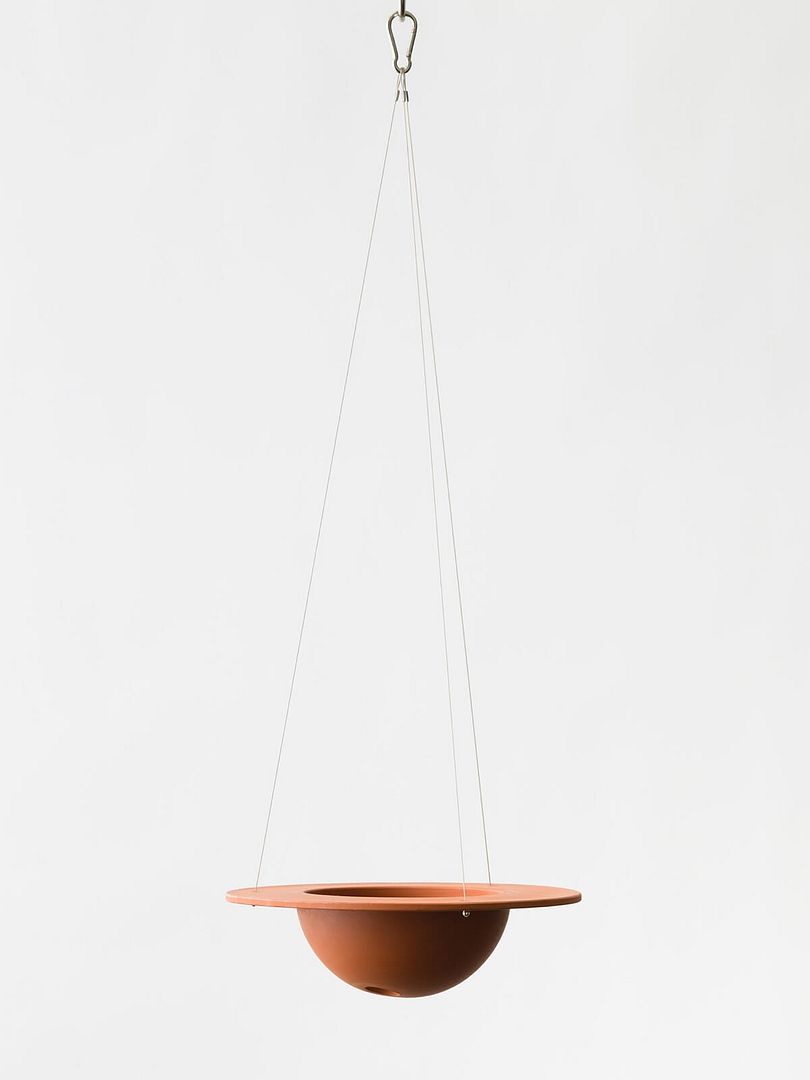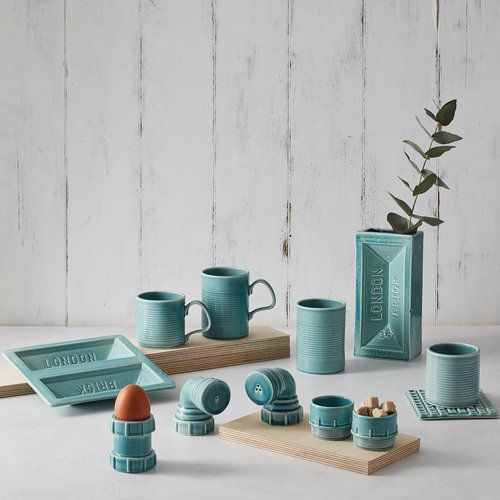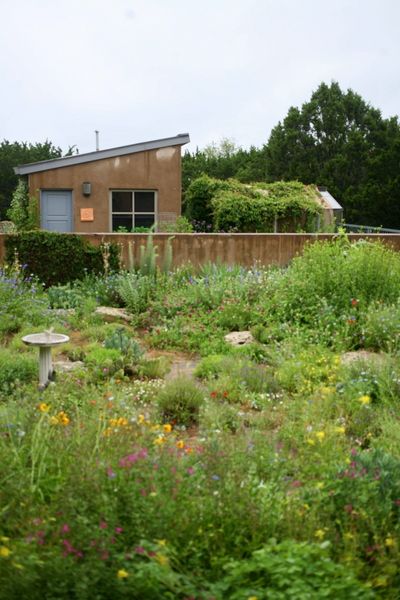Do you ever worry that you’re getting a little jaded, just slightly inured to cool stuff because we see so much of it now via blogs, Instagram, online periodicals? I admit I worry that occasionally feeling a little inspirationally flat will stretch on into a forever of not caring ever again about interesting design, and that would be an impoverished existence indeed. And then that thing comes along that rocks my world all over again.

Want! It feels so good to want, doesn’t it? Waaaaant! To live is to want, and I’m flooded with want for the UFO pot, which landed on my Instagram feed yesterday (izawa_seito). Deep admiration too. From Izawa Ceramics (as seen on Gardenista).

I came upon the brilliant work of British designer Christian Marsden when I was all excited about casting industrial detritus and did a quick search to see who else was mining this urban salvage vein. My reaction was equal parts exhilaration, deflation, inspiration, admiration — possibly heaviest on deflation. It’s so good.

I love the work and am jealous of the very clever name of it all — Stolen Form.

Saya Designs reached out to AGO to help spread the word about their “Handcrafted hair sticks, hair slides and hair forks created from roots salvaged from old plantations. For each one purchased we will plant up to 10 endangered trees.” Fighting deforestation and keeping the hair out of my eyes? I’m in. Victoria sent some of their “hair sticks on a mission” for us to play with, results of which will be on the blog soon. (It’s estimated a quarter of carbon dioxide emissions are sucked up by trees — very effective carbon sinkholes!)

rainy-day garden of Jenny Stocker, Austin, Texas, the Rock Rose.
Beth Chatto‘s life in the garden has come to an end, leaving so many of us grateful, inspired, in awe of her legacy. The Dry Garden is a classic I’ve treasured a long time, but it’s in her correspondence with Christopher Lloyd (Dear Friend and Gardener) where I think her complex portrait really comes into focus:
“Dear Christo…I had forgotten to take bread out of the freezer last night, so I put a flat round loaf into the oven while I carted logs into the house for the wood-burning stove. Coming in from the cold air I found the smell of warm bread and wood smoke comforting. After breakfast I went out to empty the sink bucket, feed the birds and collect fresh vegetables, intending to take only a few minutes, but an hour easily slips by on such a rare morning. Near the compost heap, where I empty the waste-bucket, I spotted a fine plant of Euphorbia wulfenii seeded into a narrow crack in the concrete floor at the foot of a south-facing wall. It looks better, if anything, than many I have in cultivated borders, possibly benefitting by having its back to the warm wall. After all, it comes from the southern Mediterranean countries…I bent to look for the flower buds and found clusters or ladybirds, tucked close to the stems, protected among tight whorls of leaves, waiting, ready for their first meal of aphids when they arrive.”
(So you’re worried you don’t have a so-called “green thumb”? Cultivate instead an appetite for hard work and a keen, observant, insatiably curious mind — those make better odds for becoming a good gardener.)
At Jenny Rocker’s Austin garden, visited in the rain, the fleeting wildflowers bent earthward by the deluge, Beth Chatto’s name came up as an influence. Jenny and Beth share many of the qualities I mentioned above.

Jenny, a British expat, takes the extremes Austin’s climate mercilessly doles out and crafts a gorgeous, unintimidated, uniquely personal horticultural response based on careful observation of the soil (or lack of it!), geology, climate. Beth would be so proud. Gardens are a dialogue with the land, the climate, and those living as well as passed on. I was reading a book on the plane to Austin by New Yorker journalist William Finnegan, a memoir of his surfing childhood “Barbarian Days,” and was struck by the similarities between surfing and making a garden, the intense observation and knowledge required of local conditions like currents, underwater reefs, wind conditions. I’ve misplaced the book, but here’s a quote from a New Yorker piece, “Playing Doc’s Games—I” for some of its flavor:
“A wave comes. It swings silently through the kelp bed, a long, tapering wall, darkening upcoast. I paddle across the grain of the water streaming toward the wave across the reef, angling to meet the hollow of a small peak ghosting across the face. For a moment, in the gully just in front of the wave, my board loses forward momentum as the water rushing off the reef sucks it back up the face. Then the wave lifts me up—I’ve met the steepest part of the peak, and swerved into its shoreward track—and with two hard strokes I’m aboard. It’s a clean takeoff: a sudden sense of height fusing with a deep surge of speed. I hop to my feet and drive to the bottom, drawing out the turn and sensing, more than seeing, what the wave plans to do ahead—the low sun is blinding off the water looking south. Halfway through the first turn, I can feel the wave starting to stand up ahead. I change rails, bank off the lower part of the face, and start driving down the line. The first section flies past, and the wave—it’s slightly overhead, and changing angle as it breaks, so that it now blocks out the sun—stands revealed: a long, steep, satiny arc curving all the way to the channel. I work my board from rail to rail for speed, trimming carefully through two more short sections. Gaining confidence that I will in fact make this wave, I start turning harder, slicing higher up the face and, when a last bowl section looms beside the channel, stalling briefly before driving through in a half crouch, my face pressed close to the glassy, rumbling, pea-green wall. The silver edge of the lip’s axe flashes harmlessly past on my left. A second later, I’m coasting onto flat water, leaning into a pullout, and mindlessly shouting “My God!”
Very different experiences temporally, but I’ve walked into the garden some mornings and mindlessly shouted those very same words.
The Planthunter’s Guide to Growing Native Houseplants suggests veering away from run-of-the-mill houseplants and experimenting with something like, oh, lomandra and Grevillea robusta!? Native in this case meaning hailing from Australia, but the idea is an intriguing one.
The New York Times’ somewhat snarkily condescending but nevertheless useful advice on “How To Become a Plant Parent” can be found here.

Lastly, a local plant sale in Thousand Oaks and a garden tour in San Clemente this Saturday.
Have a great weekend!

I enjoyed the surfing book quote — not something I would have thought to pick up and read, but the writing is compelling. I’m now picturing Jenny — and all of us who garden — surfing a big wave of knowledge of weather, soils, and plants.
What an eclectic combination of Friday clippings! All very different but connected by gardens…
I love tracking how your mind works – skipping through a miscellany of topics, making interesting connections. I will miss Beth Chatto but her influence will live on. I await input on your experiment with the hair sticks, which look intriguing but also as though they’d instantly fall through my hair onto the floor. Best wishes for a wonderful weekend – the weather will be splendid, even if rainless.
There’s another excellent appreciation of Beth Chatto by Dan Pearson on his weekly blog: http://digdelve.com/beth-chatto/ (The archives are a treasure trove for times when a gardener is driven inside by heat, cold, rain, or bugs.)
Hope the cactus & succulent sale was rewarding! Thought of you yesterday as I bought a Pelargonium sidoides in my only plant-acquisition foray of this season, and now feel I have no container worthy of it. I expect there’d have been one at the Elks Lodge…